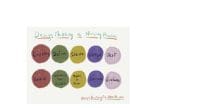The months of December and January usher in not just the holidays, but a new batch of registered nurses from accelerated nursing programs across America. For any new grad, this is an exciting time, teeming with possibilities and new anxieties. Nursing social media abound with advice from the vague “manage your time wisely” (what does it actually mean?) to “take care of yourself” (how?). These generalities are like signposts that are seen as obvious on the return trip, but are not easily spotted on the way to the destination. Depending on the new grad’s clinical experience, they most likely straddle between the novice and advance beginner levels based on Patricia Benner’s model of skills acquisition.
New grads typically have limited exposure to routine and real clinical scenarios where they have to think and act fast. A context-based clinical judgment is a challenge for inexperienced nurses. Here, I offer new grads specific hints for getting unstuck and to accelerate clinical imagination when faced with a deteriorating or unstable patient. If you’re a preceptor, these prompts also might be useful in coaching new nurses.
Wash your hands—it gives you 20 seconds to think
Every nursing skill checklist starts with hand hygiene. In clinical situations (emergent or routine) where I find myself stumped on what to do next, I wash my hands. This simple but very important first step gives me 20 seconds to think, to do a quick search in that portable search engine called the brain. It’s the same reason I wash my hands after I’ve evaluated a patient; it buys me another 20 seconds in which to consider my options. I find that the deliberate anointing of the hands with alcohol-based sanitizer (or soap and water if the patient has C. Difficile infection) gives a certain salience to patient safety and consecrates our promise to do no harm. Even if an exact solution doesn’t materialize in 40 seconds, the habit of thinking through inaction is an important exercise in the refinement of clinical judgement.
Take a set of vital signs
Some time ago, while walking by a busy med-surgical unit, I heard a faint cry. The source was a patient who was kneeling on the floor, short of breath, and diaphoretic, but awake and alert. I called for help. When two colleagues came in, their immediate action was to clean the patient from the bowel and bladder incontinence and call for housekeeping. Perhaps cleaning is a proverbial nursing reflex. And it is a good thing. But, in some scenarios, assessment is better. Glancing at the patient’s fading color, I thought aloud “let’s get a set of vitals.” Outside the context of cardiac arrest, whenever I was faced with a deteriorating patient and I didn’t know what to do, I took a full set of vitals. Why? Because sooner or later, another member of the team (who may also not know what to do next) will ask for them. When nurses take vital signs themselves, it affords them proximity to the patient, gives them the chance to scan the patient’s environment, and an opportunity to stop, look, and listen to the unfolding scenario.
Call for help
An acute situation requires many hands and the right skill mix. New grads may not feel comfortable calling for help, may not recognize the need to ask for help, or don’t know how to effectively summon assistance. A simple fix is to huddle with your preceptor or an experienced colleague and ask for help. During my first week on orientation, my preceptor asked me to “put the patient on room air.” Although I knew the words “room” and “air,” I had never heard of room air in my undergrad education in the Philippines. Thinking that room air is a medical supply, I went to the store room, scanned the alphabetically arranged items on the shelves and searched around “R,” hoping to find the gassy product that I would eventually “put” on the patient. It was not until 20 minutes later that I mustered the courage to ask another nurse where room air was stored. She waved her hands about her and gave me a quizzical look that made me feel like an airhead. The moral of the story: Don’t dilly-dally. Ask for help.
Put the patient on oxygen
Almost all patients who are going south need supplemental oxygen. I say this as a broad generalization, keeping in mind that supernormal oxygen levels in the context of myocardial infarction is harmful. Entry-level nurses are steeped in the notion that oxygen is a medication and therefore needs a prescription. Without discretionary clinical judgement, the context-free obedience to “do not give without an order” hammered in nursing school can be detrimental. It’s okay to mumble to yourself that your priority nursing diagnosis is impaired airway clearance (can you imagine?). So, grab your stethoscope and listen to the breath sounds, raise the head-of-the bed if indicated, and put the patient on oxygen. It does the body good.
Hold the patient’s hand
A deteriorating patient is scared. And the new nurse caring for this patient likely feels the same. So, after you’ve taken a set of vital signs, called for help, and placed the patient on oxygen, hold the patient’s hand. Holding the hand of someone in distress is a manual and tactile promise that we won’t let go just yet. And while you’re at it, say something authentically reassuring.
All together now
A typical nursing licensure exam question asks the would-be-registered nurse what they would do first in a given situation. A seasoned nurse can tell you that there’s no such thing as doing just one thing first. Multitasking and multi-thinking have become de rigueur in acute care. This is what makes nursing daunting. When we prompt ourselves to start with the practical initial steps when faced with a clinically declining patient, we can move closer toward a definitive solution and somehow mitigate nervous exhaustion.


















